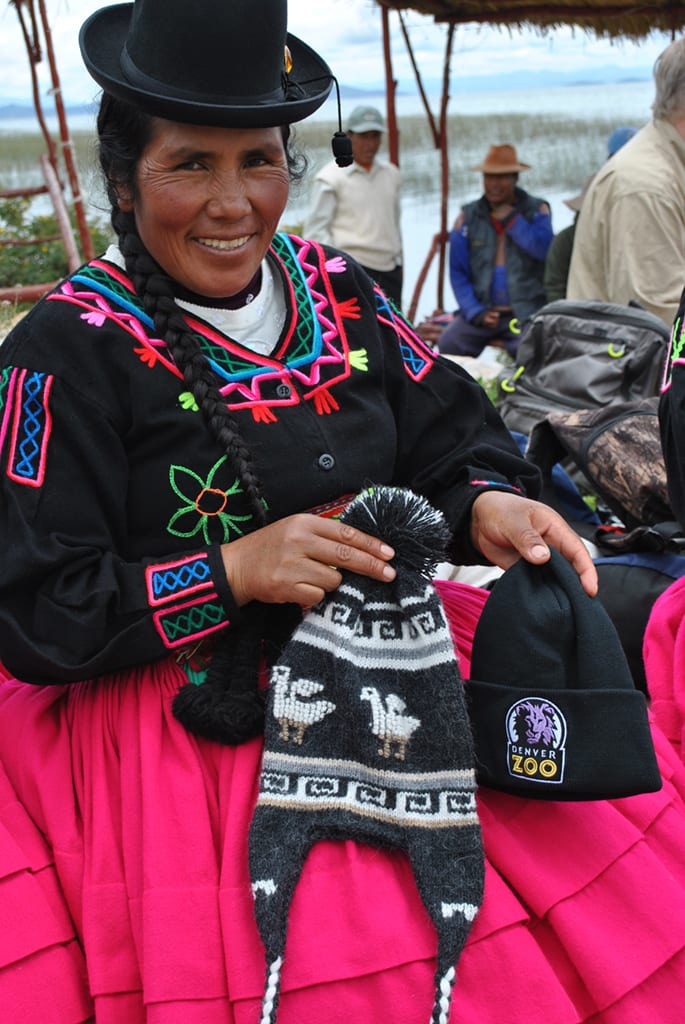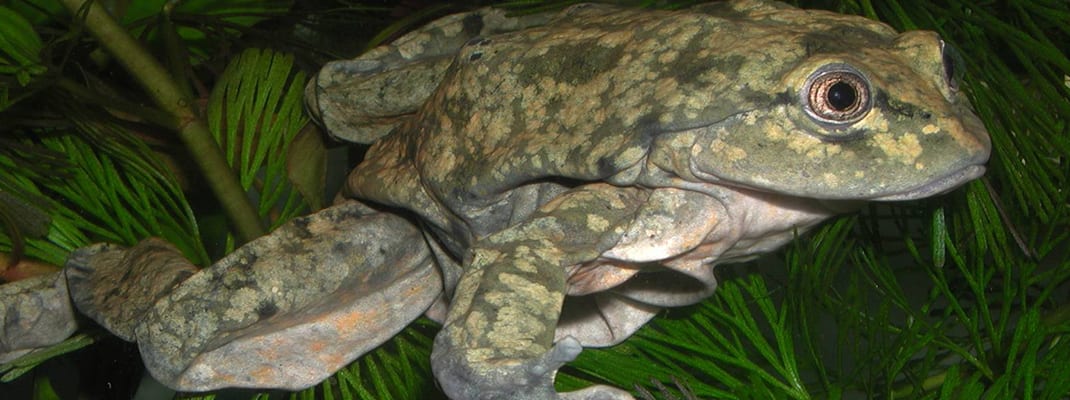In parts of Peru, there's an old culinary delicacy that consists of liquefying the Lake Titicaca frog to cure a wide range of ailments.
Warning: some viewers may find the video upsetting or disturbing.
Download our Results Report to learn about the impact Denver Zoo has made in Peru.
You can contribute to Denver Zoo's conservation efforts in Peru.
Peru is a highly diverse country split into three geographic regions - the coast, jungle, and highlands - and is home to a wide range of biodiversity. Although the Amazon is famous for being an ecological hot spot for amphibian species, Denver Zoo is working to save critically endangered species in two aquatic ecosystems of the high Andes. Located on the border of Bolivia and Peru is Lake Titicaca, the highest navigable lake in the world sitting at 12,500 ft. above sea level, and home to Lake Titicaca frogs. A few hundred miles away, at 13,500 ft. above sea level, is Lake Junin, the largest lake entirely within Peru. Lake Junin is home to two species of endangered frogs and several endemic bird species.
The Lake Titicaca frog (Telmatobius culeus) is biologically unique; it is the world's largest entirely aquatic frog. As the top endemic predator in Lake Titicaca, it is ecologically important, and as an indicator species, it provides an important measure of ecosystem health for people and wildlife. Unfortunately, T. culeus is recognized as critically endangered by IUCN. Likewise, the Junin frog (Telmatobius macrostomus) is an indicator species, critically important for ecosystem health in its habitat at the headwaters of the Amazon basin. As with many amphibian populations in crisis around the world, these species are imperiled by social and environmental threats, declining at an unprecedented rate, and could face extinction in the wild in the near future. The rapid decline of their populations can be attributed to two known and challenging threats: pollution related to mines and improperly treated sewage and overharvesting by people for human consumption.
Denver Zoo is working to develop a more complete and science-driven understanding of the disease ecology, biology, taxonomy and threats related to the Lake Titicaca and Junin frog. This includes developing, implementing, and training Peruvian colleagues on rigorous and systematic population monitoring protocols and using frog DNA markers to identify species in the lake as well as which ones are being sold illegally in local and international markets. We’re also studying their breeding ecology in captivity in case we need to develop assurance populations, and in 2018, Denver Zoo became the first zoo in the northern hemisphere to successfully breed Lake Titicaca frogs.
In parts of Peru, there's an old culinary delicacy that consists of liquefying the Lake Titicaca frog to cure a wide range of ailments.
Warning: some viewers may find the video upsetting or disturbing.


Conservation cannot be done alone, and Denver Zoo is thankful for our strong network of collaborators that contribute to the conservation of frogs in Peru: